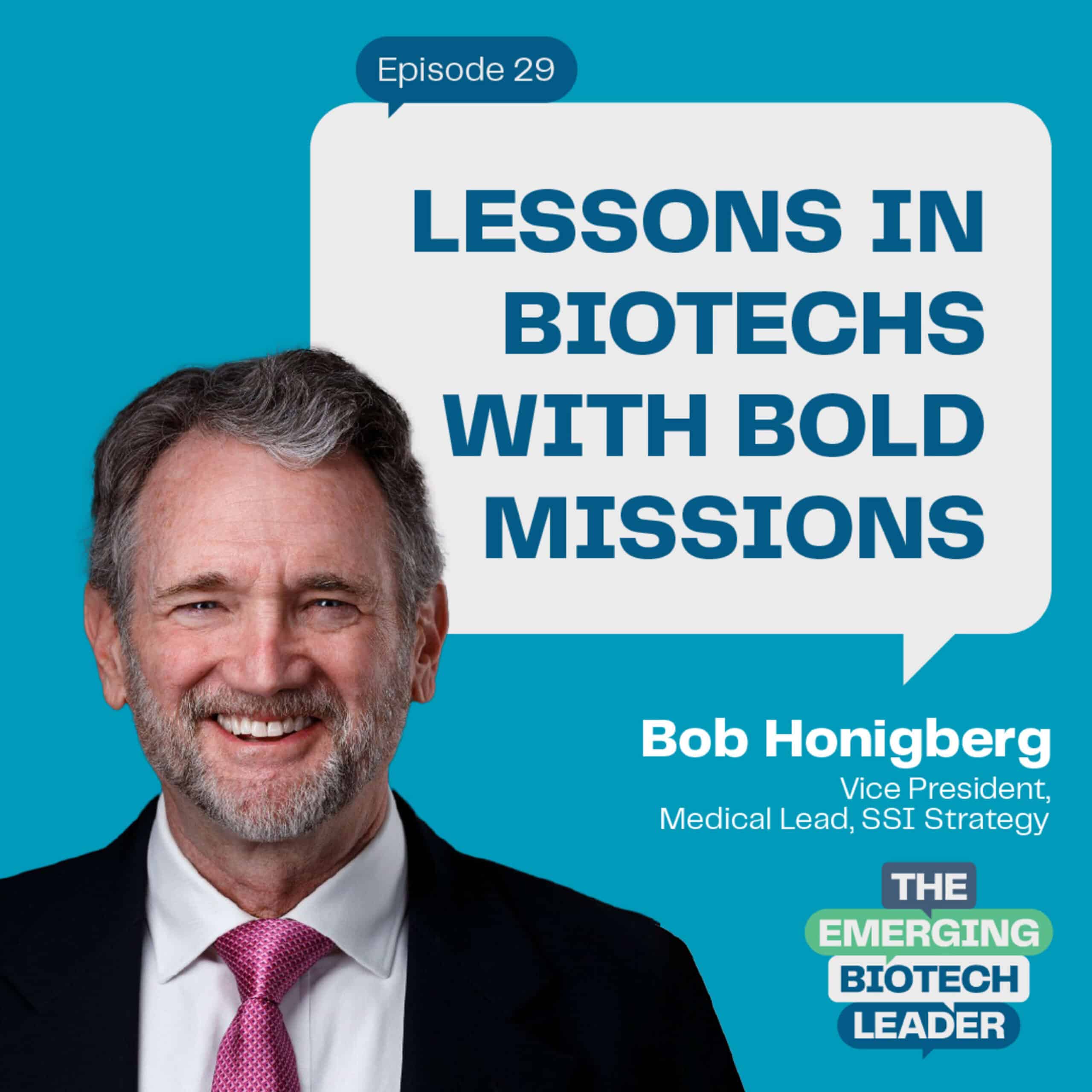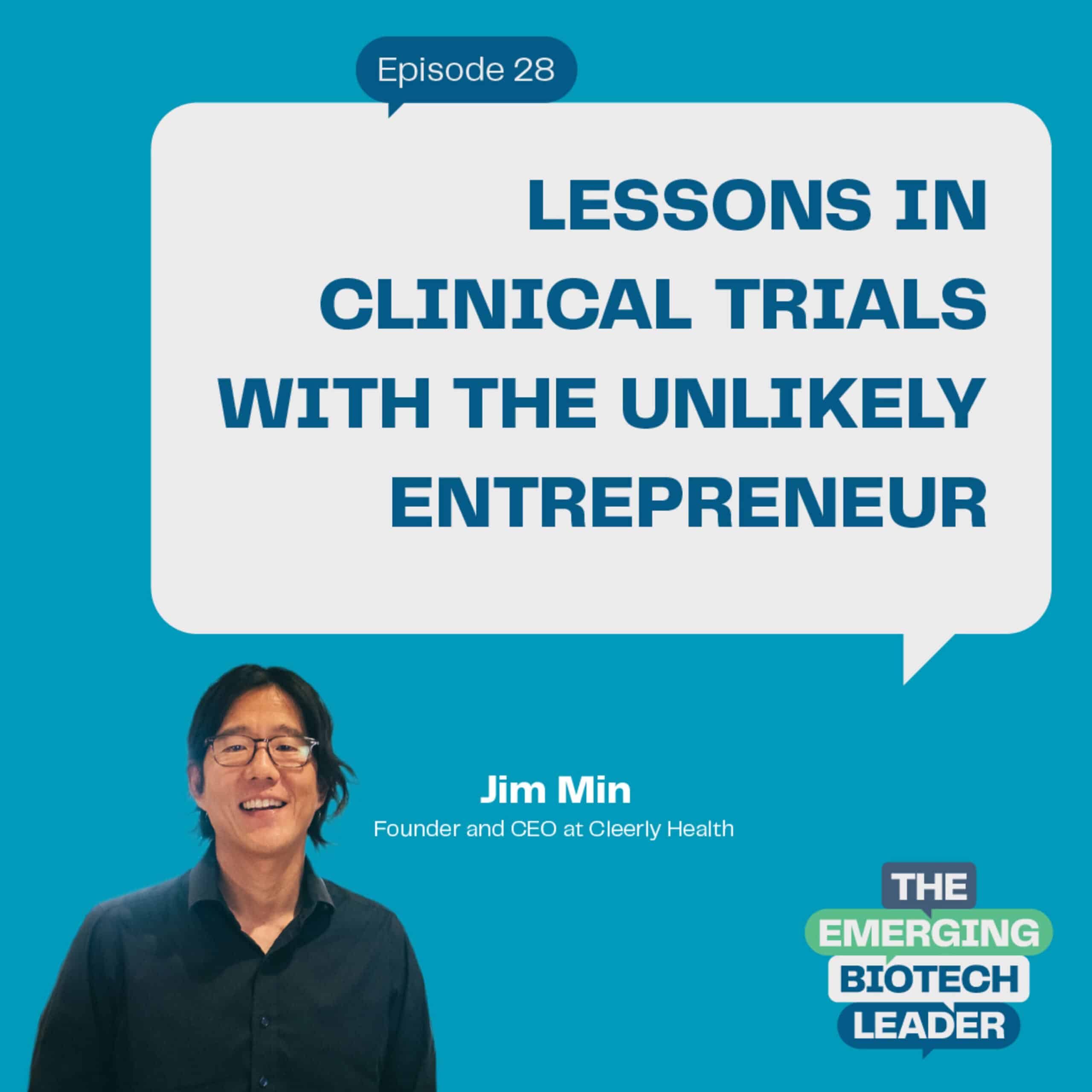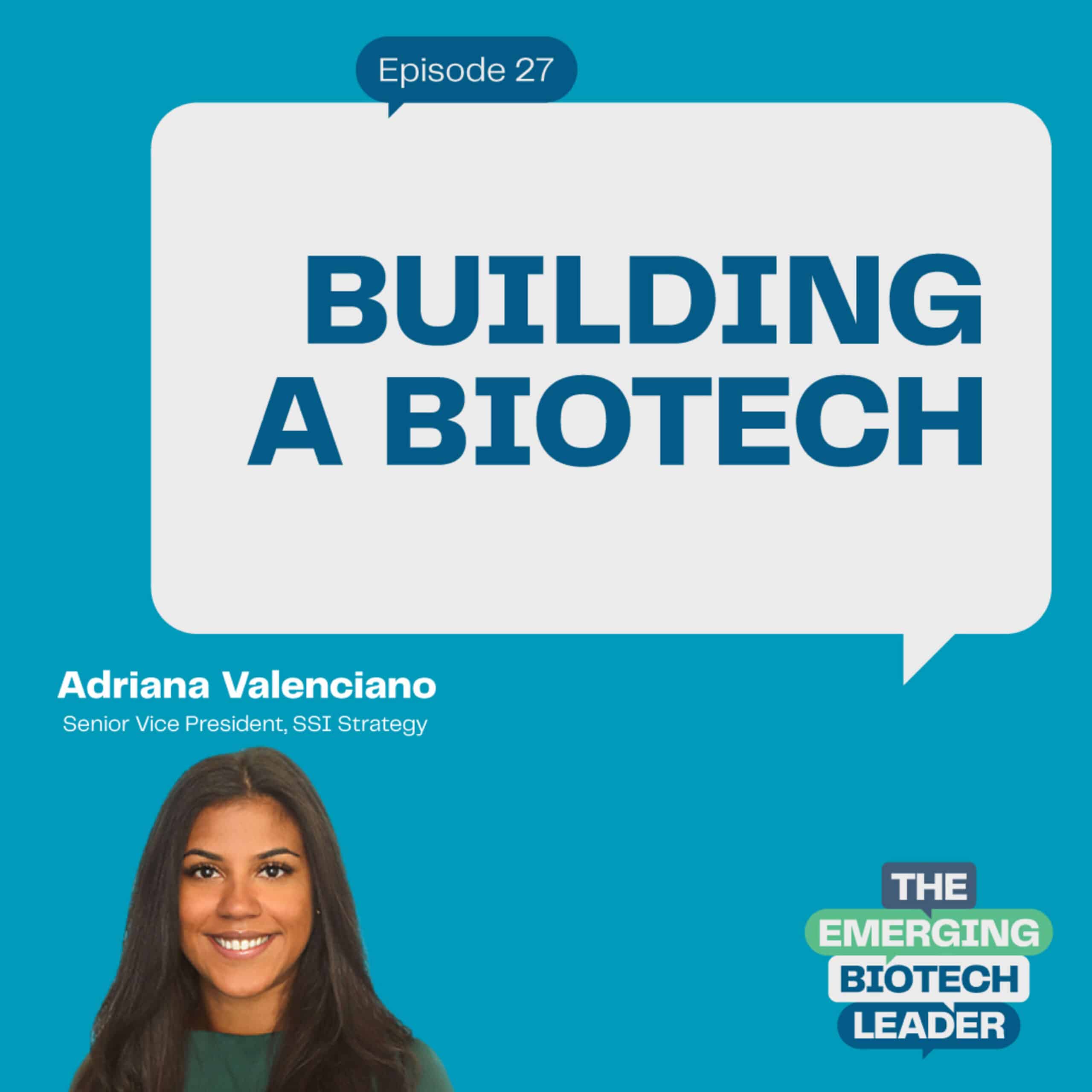
“You may not have the resources as a CMO, especially with smaller biotech companies, but you have to be resourceful.” Ramin Farhood, Senior Vice President, SSI Strategy
Every guest on the Emerging Biotech Leader builds on the insights from our previous contributors while also adding their own unique best practices, analogies and experience.
In that spirit, for Episode 16, we’re grateful to have Hootan Khatami, Senior Vice President of Medical at SSI driving the conversation forward on CMOs, (Chief Medical Officers), by sharing his reality on what the CMO role is and what it entails.
One of Hootan’s key lines is that being a CMO is like walking a tightrope in a pair of high heels. But here’s why knowing that now is encouraging vs discouraging: you’ll be better prepared to handle the role and truly understand the stakes and requirements that come along with it. This is a role of utmost importance to a biotech since it serves as the face of the company.
Kim, Ramin and Hootan unpack the competing priorities CMOs have while pairing this knowledge with real-world “how-to’s” on preparing and setting yourself up for success in this role.
Our hosts and guest also discuss:
- How CMOs can be resourceful
- How to cut through the noise and become decisive and selective
- How “I don’t know” is very normal–CMOs aren’t supposed to have every single answer
- Why emotional intelligence, grit and active listening are crucial skills to utilize
This episode is a quick listen with no shortage of helpful discussion. Read and follow along for a few key takeaways.
On Filling The Gaps
As we heard in Episode 15 of the Emerging Biotech Leader, CMOs interface across so many contacts: the board, KOLs, patient advocacy groups as well as their CEO. Adding to that, the CMO also oversees study design and the science behind a therapeutic or treatment.
“The toughest role of the CMO is to fill the gaps as one person,” Hootan shared. “There is a lot of complexity and it can be a lonely road if you don’t have a real thought partner to help you narrow down the options, solve puzzles and help you execute.”
This is where Ramin encourages CMOs to find their leverage.
“You may not have the resources but you have to be resourceful. You can tap into previous CMOs at other companies who you are networking with or, align with friends that know somebody who’s been working with investors that you want to reach out to, helping you understand where they’re coming from and what their perspective is.”
As a new CMO, stay optimistic that constraints will uncover new ways for you to do more with less. And your newfound resourcefulness will become an in-demand skill regardless of future funding and headcount by helping you build an agile approach to problem-solving.
Why An Open Mind is Key
Ramin, Kim and Hootan acknowledge that it’s impossible for a CMO or any new biotech leader to have the exact answer for every question and challenge. Why? Regulatory alone is changing at a fast pace, not to mention the unique situations brought on by current funding pendulums, rapid digital advancements and the economy.
To help CMOs round out their expertise with the wisdom of others, Hootan suggests creating a sounding board.
“You always have the option to get close to and gain advice from advocacy groups, and other organizations that can help you out. There are also consultant firms out there who have “been there, done that” and have worked with many different clients who can provide good advice as well. I think overall, you kind of have to keep an open mind and be open to getting advice, knowing and feeling comfortable with what you know and understanding that there’s a lot that you don’t know.”
With reassurance, Ramin reminds us all: “There’s a lot you don’t know but the answer is out there.”
On that topic, Hootan raises visibility around the fact CMOs will hear a lot of noise.
“A key challenge in the role is cutting through the noise. There is a lot of information coming at you, the question becomes ‘what do I do with it?’ Really boiling it down is the toughest. It’s the biggest joy and the toughest thing anyone has to do.”
Here’s how Hootan advises that you prioritize: be selective on where you put your energy and focus. There’s the scientific knowledge responsibility of the CMO then the other task of boiling down the data. “It’s normal to say, ‘this is what I know, this is what I don’t know.’ Break things into smaller pieces of the puzzle.”
As Kim hears each of these characteristics and traits, she brings up the topic of learning agility and grit.
“Be willing, on the grit side, to do the work! It’s doing the work of learning, it’s doing the work of translating it. It’s doing the work of connecting all of these critical pieces within the business internally, as well as bridging to the external community, whether it’s the board, investors, KOLs patients, but also bridging to your commercial colleagues and bridging to your other R&D colleagues, the CSO marketing and other functions internally.”
In response, Hootan weighs in that EQ is another critical skill. Active listening and self-awareness will help you take in the information that you receive, then analyze what you will do with that information and better explain yourself.
“Use active listening to narrow the questions on what is clear and what is gray.”
Ramin specifies as well, “You have to make sure that your voice is heard and your perspective is there for discussion, whether it’s with internal folks or externally.”
Continued Thoughts On Organizational Structure
As a piggyback on Episode 15, Kim is curious about Hootan’s thoughts on organizational structure. From his POV, here’s what works and doesn’t work for the CMO reporting relationship. We hope you love his answer as much as we did.
”There’s no such thing as optimal. There’s different paths for different organizations, for different reasons and different stages. Instead of quicksand, it’s slow sand. It’s hard to predict what’s going to change when. What is ideal is a modular or evolving support structure with key points that are constant.”
To hear more from Kim, Hootan, and Ramin on the one piece of advice CMOs should know before jumping in and a few other helpful tips, listen to the full episode.
Missed Episode 15, Navigating The CMO Role with CMO Chris Morabito?
Hit this link to access the replay.


